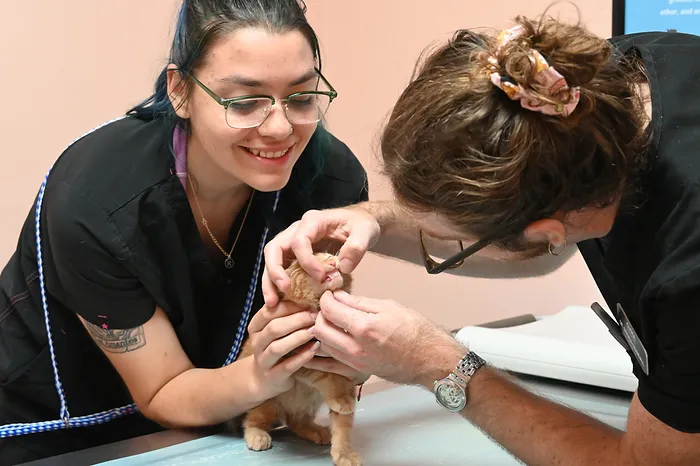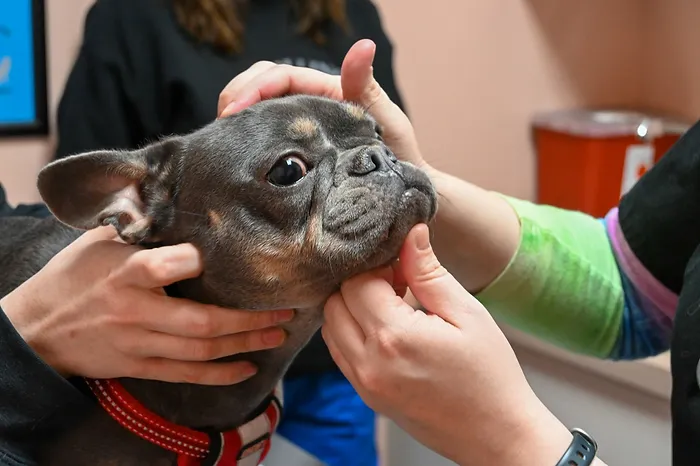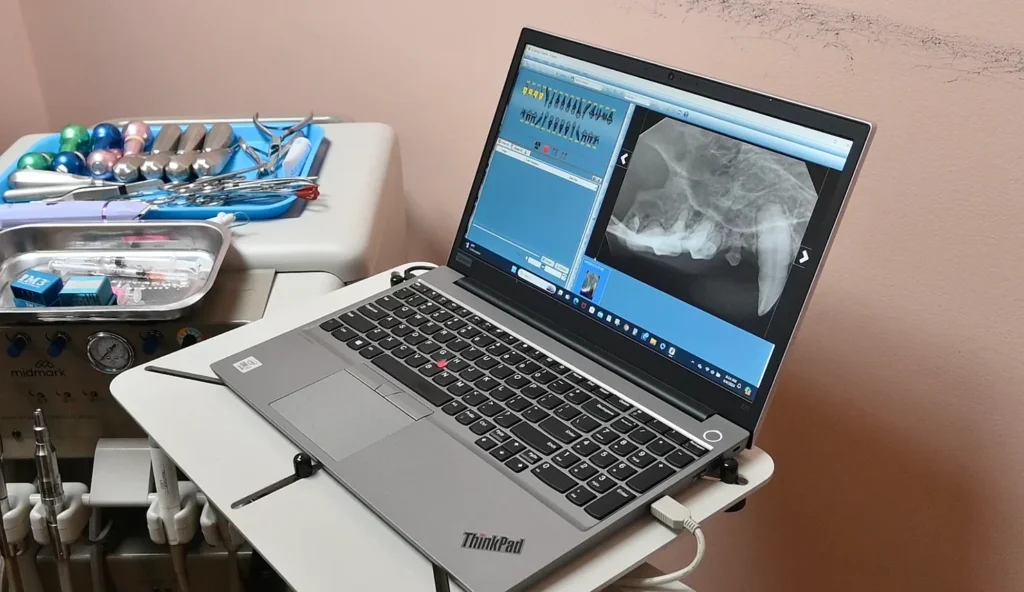Dogs and cats have baby teeth, just like people!
Puppies and kittens start to lose their baby teeth at four months of age. All of the adult teeth should be present by six months of age. If a baby tooth does not fall out when it should, problems can occur.
The retained baby tooth can crowd the adult tooth and prevent it from maturing correctly, causing it to be weak or to point in the wrong direction. Retained baby teeth also cause gum disease (periodontitis) because hair and food debris accumulate between the teeth. Retained baby teeth can also cause malocclusion – a condition where the jaw can’t close properly.


In my experience, retained baby teeth occur most frequently in small and toy breed dogs such as Yorkies, Chihuahuas, Maltese, Dachshunds, and Toy Poodles. They are often found in cats, too.
The most common retained baby tooth is one of the fangs (canines), fortunately, it’s easy to check for this at home! If you look at the 4 big long canine teeth at the front of your dog’s mouth, a retained baby tooth will be just behind the adult canine – usually hugging right next to it. It can occur on one or even all of the 4 canine teeth, so it helps to compare each of the fangs if you aren’t sure.
f your puppy (after 7-8 months of age) has a retained baby tooth, the recommended treatment is the removal of the baby tooth. We recommend a full dental, including anesthesia and dental X-rays, to better evaluate the retained baby tooth and correct the problem.
If your dog is over 7 months old and has retained baby teeth, we encourage you to bring them in for a dental consultation with us at Spay Illinois.
Call us today at 630-961-8000 to schedule an appointment!
